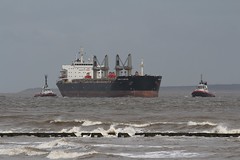Wednesday, November 29, 2006
A record number of complaints, over 600, against the New Zealand restaurant chain Hell Pizza for its advertising campaign using condoms delivered via letterbox have been upheld by the Advertising Standards Authority (ASA). Family First “welcomes heavenly decision from ASA on Hells Pizza.”
Hell Pizza delivered sealed foil condoms in a cardboard box to households nationwide. On the outside of the box were the words: “Our pizza for meat lovers!” and the restaurant logo. The inside of the box included the condom and explicit instructions on how to use it. Hell Pizza delivered 70,000 condoms to households. An additional 100,000 were distributed to health and community groups who the chain said were “very supportive.”
Bob McCoskrie, director of Family First, said: “This is a victory for the protection of families from grubby advertising by companies like Hell’s Pizza, and is also a message to other companies who cross the line of what is decent and acceptable to our community. This is a pizza delivery company taking the moral high ground on sex education and telling parents how to give sex education to their kids, implying that all parents have failed at this, and kids as young as five should be exposed to this type of material.”
S. Nicholas filed a formal complaint and said in the complaint:” Any child can open the box take out these condoms and play with them. These are contraceptive devices, not playthings. The package also gave full instructions ‘how to use the condom’ in case some young person wanted to ‘experiment’! It shows lack of taste and is irresponsible.”
Other complainants said that it is inappropriate to promote food with a condom, the text “meat lovers” was offensive, that it undermined family values, and removed the right for families to teach sex education to their children. Condom use instructions that came with the advertising campaign were unnecessary and unacceptable and that there are health and safety issues if the condom broke during delivery.
The ASA said that three code of ethic rules were broken. They were basic principle 4, advertisements should follow a sense of social responsibility to both the consumers and society; rule 4, advertisements should not contain anything generally offensive and rule 5, advertisements should not contain anything that would cause serious widespread offence.
The agency Cinderella, acting on behalf of Hell Pizza, said that they “most certainly did approach this campaign with a due sense of social responsibility to consumers and society.”
Cinderella said: “From the very beginning, the company’s marketing activities were unconventional and memorable… HELL has built a successful brand by utilizing a limited marketing budget in ways that sought to grab attention and secure significant additional media coverage that would never have been able to be sustained using conventional, paid-for, advertising techniques.”
“LUST and sex are, in our experience, often found not far apart. One generally follows the other. And enjoying great food either before or after is also not such a stretch.”
Replying to the instructions that have to be printed, Cinderella said: “The terms are not really sexually arousing and the suggestion made by one hysterical complainant that they could then go and act out the instructions on the next door child is just not plausible and probably not even physically possible. It borders on insane to believe that this is a credible risk. …there has not been an explosion of sexual assault of children after being exposed to government health warnings.”
The ASA then considered all information given to them by both complainants and the advertiser.
The ASA agreed that the advertisements were in breach of basic principle 4 because: “Unsolicited, unaddressed delivery of a condom to letterboxes to promote a food brand did not meet [the basic principle 4] standard.” The standard “required all advertising to be prepared with a due sense of social responsibility to consumers and society.”
The ASA then reviewed whether or not the advertisement programme had breached rule 4 and rule 5. “The method of distribution was a key factor in considering whether or not the promotion had breached the Rules, taking into account the random context, medium, audience and product. The majority of the Board noted that it was difficult to target specific groups or ages using unaddressed letterbox distribution. In addition, it was concerned that such a method of distribution allowed any member of a household access to the advertising.” The majority of the ASA board did not find the instructions offensive but did agree that it would cause widespread offense. The advertisement programme is in breach of rule 4 and rule 5.
Some of the ASA board said: “…While the promotion had caused offence to some, this was offset by the possibility that the promotion had reached an audience that may not access the safe sex message via other media.”
The ASA decided to uphold the complaints, “complaints were unanimously upheld.”
“Our message to Hell’s Pizza is simple – stay out of the bedroom and get back into the kitchen,” Mr McCoskrie said.





